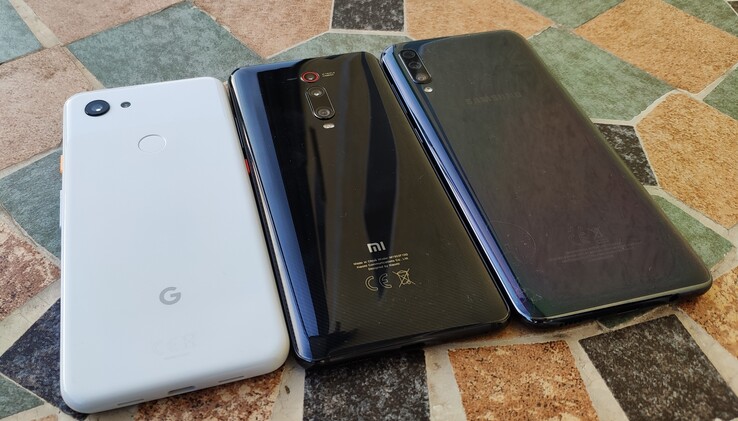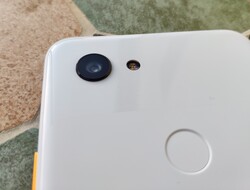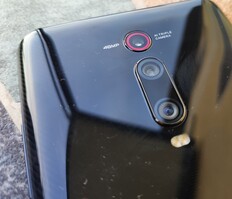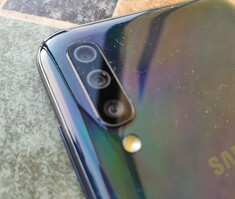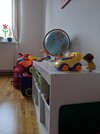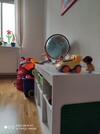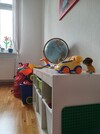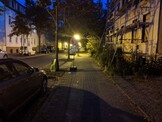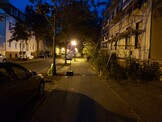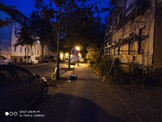Smartphone Camera Comparison: Pixel dominance in the midrange
One of the most important features of a modern smartphone is its camera. OEMs used to confine high-resolution and multiple camera setups to their flagship devices, but we have now seen this filter down to the midrange and even some budget smartphones. However, not all camera hardware is created equal, so including higher resolution or more sensors does not necessarily make a smartphone any better of a photography companion. With that in mind, we have chosen to pit the Google Pixel 3a, Samsung Galaxy A70, and Xiaomi Mi 9T against each other, three midrange smartphones that approach the camera conundrum differently.
We will also consider these devices against current flagships like the Huawei P30 Pro and Samsung Galaxy S10 Plus. Specifically, we will use the P30 Pro for low-light comparisons and the Galaxy S10 Plus for daylight comparisons, with both emerging as the class leader in these disciplines among modern flagships.
But first, let us start with what camera hardware the Pixel 3a, Galaxy A70 and Mi 9T offer. The latter two have gone down the triple rear-facing camera route, with the Pixel 3a seemingly lagging behind with its single rear-facing sensor.
Camera Hardware
Google has equipped the Pixel 3a with a Sony IMX363 CMOS sensor, the same one found in the Pixel 3. The 12 MP sensor has dual pixel autofocus, optical image stabilization (OIS), an f/1.8 aperture and can capture photos in up to 4,032 x 3,024.
By contrast, Xiaomi has opted for the Sony IMX582 for the Mi 9T, a 48 MP sensor that has a marginally wider f/1.75 aperture and a Quad-Bayer color filter. The latter allows it to combine 2 x 2 adjacent pixels into one larger pixel, effectively creating a 12 MP photo. This so-called 4-in-1 pixel binning theoretically improves photosensitivity and should allow the sensor to capture better lit night or low-light shots. Xiaomi complements the Sony IMX582 with an 8 MP telephoto lens and a 13 MP ultra-wide-angle lens, the details of which we have included in the table below.
The Galaxy A70 also has a higher resolution primary rear-facing sensor than the Pixel 3a, although it is a mere 32 MP. It has an f/1.7 aperture though, which is the widest of the three devices. The Galaxy A70 has a 5 MP secondary sensor and an 8 MP ultra-wide-angle sensor, the latter of which has a 123° field of view (FOV). The ISOCELL Slim GD1 (S5KGD1) sensor uses pixel binning like the Sony IMX582 does to create 12 MP photos too.
| Google Pixel 3a | Samsung Galaxy A70 | Xiaomi Mi 9T | |
|---|---|---|---|
| Rear-facing | 12 MP, f/1.8, 28 mm, 1/2.55", 1.4 μm, HDR | 32 MP, 1/2.8", f/1.7. 5 MP bokeh effect, 1/5.0", f/2.2. 8 MP ultra-wide-angle, 1/4.0", f/2.2 | 48 MP Sony IMX582, 1.6 μm, f/1.75. 8 MP telephoto lens, 1.12 μm, f/2.4. 13 MP ultra-wide-angle, 1.12 μm, f/2.4, 2x optical zoom |
| Front-facing | 8 MP, f/2.0, 24 mm, 1.12 μm, HDR | 32 MP, 1/2.8", f/2.0 | 20 MP pop-up, 0.8 μm, f/2.2 |
| Software Version | PQ3B.190750.003 | A705FNXXU2ASF5 | V10.3.10.0 |
Rear-Facing Cameras: Test Conditions
We have limited ourselves to automatic, portrait and low-light modes for these tests. We shall also only use the primary rear-facing sensor for all three devices, and we will leave all on factory settings. All three take 12 MP photos by default, for reference.
We also made sure to update all the default camera apps, the version of which we have included in the table above. We omitted the secondary and tertiary cameras of the Galaxy A70 and the Mi 9T, as we would only be able to compare them against the single sensor of the Pixel 3a. You can view all our tests shots in their original size by clicking full resolution, the link for which we have included in each test photo.
Daylight Photography
At first glance, all three devices produce decent looking daylight photos even in challenging lighting and weather conditions. However, a closer analysis of our river scene reveals that the Galaxy A70 overexposes objects, making colors look washed out. The Mi 9T suffers from the former too, but it does a better job at reproducing colors more naturally. Google’s High Dynamic Range (HDR) mode puts the Pixel 3a on a different level here, with our test shot having more vibrant contrast and a more even brightness distribution than either the Galaxy A70 or Mi 9T. The camera separates delicate objects like grasses and leaves well while giving nice definition to the cloudy sky. The Pixel 3a has its shortcomings though, with it underexposing the foliage in the foreground. All three photos look sharp, but the Mi 9T edges out the Galaxy A70 in our opinion, although it gives the scene too warm of a tint for our liking.
The photo taken with the Pixel 3a looks more photorealistic than the ones shot with the Galaxy A70 and Mi 9T too thanks to its balanced color reproduction. The differences between the Galaxy A70 and Mi 9T are minor here, but the latter gets the nod on account of its more vibrant reproduction of the foreground and background foliage.
All three devices fall short of the Galaxy S10 Plus though. The Pixel 3a comes closest to matching the Galaxy S10 Plus in this scene, but its attempt looks underexposed by comparison. The differences in sharpness are surprisingly minor, with the Galaxy S10 Plus having a propensity to oversaturate colors to the point where objects like trees look almost artificial. Overall, the Pixel 3a has the best color accuracy among our four comparison devices, even though the Galaxy S10 Plus takes a more eye-catching photo.
Portrait mode paints a similar picture, although our Pixel 3a test shot looks oversaturated to our eyes. The device still does a stellar job of blurring the background of the image despite having only a single rear-facing sensor. The Galaxy A70 does a poorer job at separating the foreground from the background in our opinion, despite having three times the volume of rear-facing camera sensors. We liked the photo shot on the Mi 9T, even with the bird’s eyes being slightly overexposed. Its contrast and background blur are spot on though.
Low-Light Photography
The differences between our midrange and flagship comparison devices are more pronounced in low-light shots, with the Mi 9T being left behind by the Galaxy A70 and Pixel 3a. Our Mi 9T test shots are underexposed, with details often blurring into each other and there being a distinct lack of dynamic range. The Galaxy A70 and Pixel 3a do a relatively better job at exposing the scene than the Mi 9T, but neither can compete with the P30 Pro. The Galaxy A70 produces a more consistently lit image, but the Pixel 3a captures more details thanks to its better dynamic range. Overall, none of our midrange devices impress here.
However, the Pixel 3a takes a vastly improved photo with Night Sight switched on. It does not bring the device up to P30 Pro levels, but it helps the Pixel 3a capture considerably more details than the Galaxy A70 and Mi 9T can. The latter’s night mode is mostly redundant too, as it just highlights the deficiencies of the Sony IMX582 in low-light conditions.
The Galaxy A70 does not have a dedicated night mode, although the automatic mode can detect low-light scenes and adjust settings accordingly. We have marked this with an Asterix, for reference. Overall, the Galaxy A70 takes the most poorly lit shot at night, but it looks more natural than the mess that is the attempt of the Mi 9T.
Front-Facing Camera Results
The Pixel 3a, Galaxy A70 and Mi 9T produce vastly different selfies even in ideal ambient light. Objects look overly soft and yellowish with the Galaxy A70, with its 32 MP front-facing sensor often overexposing scenes too. The opposite is true of the Mi 9T, which is not necessarily a good thing. Our test selfies look underexposed and too cool for our tastes, but we prefer it to the shot taken with the Galaxy A70 on account of its richer contrast and better object sharpness. Both cameras have noticeably weaker dynamic range and worse color accuracy than the Pixel 3a though. The latter takes exceptionally good selfies considering that it is an 8 MP sensor. The Galaxy S10 Plus captures objects more sharply, but we still prefer the overall look of the selfies that the Pixel 3a takes.
The Pixel 3a blurs the background well too, although there are some minor visual artefacts with fine objects like hair. The device does a better job than the Galaxy A70 and Mi 9T at distinguishing the foreground from the background, although perhaps more artificially than the Galaxy S10 Plus does. Incidentally, the Galaxy A70 has a noticeably inferior front-facing camera compared with the one in its more expensive cousin.
Both the Galaxy A70 and Mi 9T struggle in low light, with our selfie test shots being dominated by a thick layer of image noise. The latter exposes low-light selfies though and reproduces colors more accurately. While the Mi 9T over-softens structures like hair and skin, it takes the most visually appealing selfie of all our comparison devices at dusk.
The Pixel 3a has another trick up its sleeve though, which vastly improves the quality of its low-light selfies. The difference between automatic mode and Night Sight is remarkable, with the latter creating a more detailed and better-exposed photo than even the P30 Pro can. Overall, nothing comes close to the Pixel 3a in this regard.
Verdict
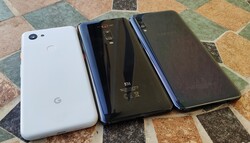
Google has proved once again with the Pixel 3a that less is more when it comes to camera hardware. The Pixel 3a looks mismatched against the Galaxy A70 and Mi 9T on paper, what with its comparatively low resolution and narrower aperture single rear-facing camera. However, Google has done an excellent job at optimizing its camera software, with many OEMs still trailing in its wake. The difference in optimization is so great that community developers have ported the Google Camera APK to other smartphones to improve their cameras. The Pixel 3a is not all roses though, with the lack of lossless zoom or wide-angle lens making it less flexible than the Galaxy A70 and Mi 9T. Still, the Pixel 3a has a fantastic point and shoot camera.
Samsung and Xiaomi have narrowed the camera hardware gap between midrange and flagship smartphones, with the Galaxy A70 and Mi 9T both have competent camera systems. Google has taken this to the next level with the Pixel 3a though, which sets the new standard for midrange smartphone cameras.
In short, the 12 MP rear-facing sensor in the Pixel 3a outshines the ones in the Galaxy A70 and Mi 9T. The former takes more contrast-rich and natural-looking photos than the latter two, with software algorithms making up for the lack of a secondary sensor when taking bokeh effect photos.
The same applies to the front-facing cameras in our comparison devices with Google opting for an 8 MP solution, a seemingly meager sensor compared to the 32 MP and 20 MP sensors of the Galaxy A70 and Mi 9T. However, the Pixel 3a trades blows with modern flagships in all lighting conditions, with Google’s Night Sight distinguishing its low-light selfies from the Galaxy A70 and Mi 9T. The front-facing cameras of the latter two lack the color accuracy and vividness of the sensor in the Pixel 3a, with the Galaxy A70 especially struggling in scenes with significant differences in exposure levels.




